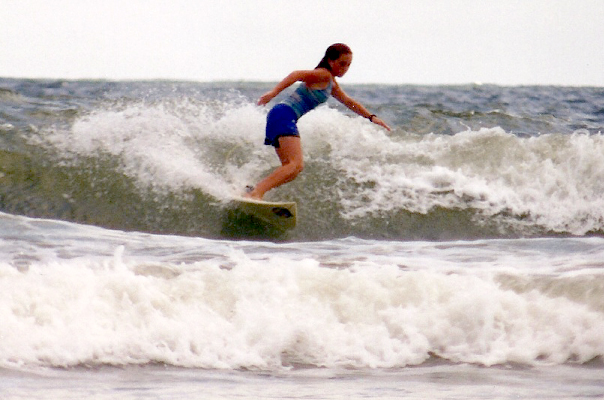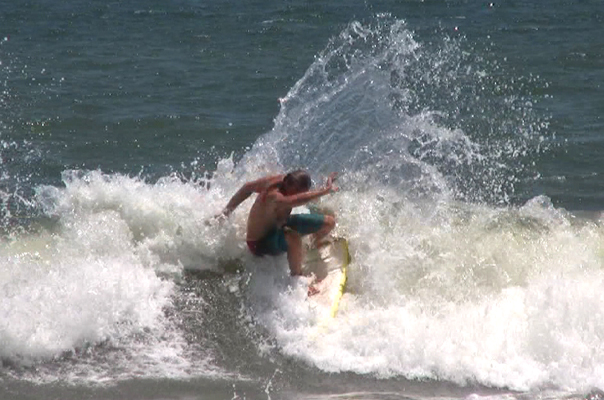One week is the blink of an eye in the experience of anyone who takes a committed interest in surfing. At Surf Asylum we’re dedicated to the long term progress of any of our students that fall in love with the sport. It took me a whole summer of going to the beach with my grandmother and sister on a daily basis to make significant progress on my used 6′ 2” Eric Arakawa “Island Classic” the first year I tried surfing. My sister on the other hand caught on almost immediately first riding a narrow, pointy foam body board and then a 6′ 3” Quiet Flight. Progress in surfing isn’t a straight line. However, if you stay in the water, you can always be gradually improving.

I’ve hit several plateaus in my surfing. The first one came after I had mastered the most basic fundamentals of surfing: getting to my feet and riding down the line. As a first generation surfer (my dad, my sister, and myself all started surfing at the same time) no one ever told me how important it was to pay close attention to the wave. This might seem obvious but as I poured through the pages of surf magazines looking at the big fans of spray and airs, I thought that I just had to get good enough and I could do the same thing on any wave. I spent years ignoring the fact that certain maneuvers required the right section on the right wave. I was surfing hard in the wrong part of the wave having never heard the word “functional” in regard to surfing. During this time I made modest progress on trips to Costa Rica or heading to South Florida, Central Florida, or the Gulf when the forecast was right. However, even as late as college I wondered what separated the surfing I was seeing in videos and magazines from my own.

My most recent plateau was partially a result of considering surfing in Florida to be all the exercise I needed. I didn’t necessarily need to hit the weight room but semi-regular yoga practice and surf-specific core and leg exercises like Taylor Knox’s SurfFit have vastly improved my speed generation and overall control on the wave. Additional core and leg strength started helping me wait out the slow parts of the wave and hold speed through maneuvers without wasted movement that throws off your rhythm and causes you to grind to a halt in some of Florida’s weaker waves.
To help me break out of any future plateaus I’ve identified 3 pillars that contribute to solid surfing.

I’ve seen good surfers that have just two of these but most great surfers have a decent mastery of all three. The Mental Pillar consists of wave awareness: how you position yourself to catch waves, how you interact with and anticipate different sections of the wave you’re riding, and it overlaps with technique when it comes to things like timing. The Physical Pillar represents your personal fitness. Good surfing requires you to build strength while maintaining agility and flexibility. The Technical Pillar includes things like how you follow through with your shoulders, getting really low at the right point in your speed generation, and overlaps with the mental aspect of surfing with things like watching the lip line (the part of the wave that is about to break) approximately 7′ in front of you.
Whenever I feel stuck from now on I’ll identify which pillar needs the most work and form a plan. Once I’ve settled on a fitness regime that keeps me where I want to be I’ll probably focus on the Technical Pillar when the waves are average and focus on the Mental Pillar when the waves get good. This all depends on the season and often all three need work, but focusing on one aspect of your surfing allows you to accomplish specific goals that you can look back on to give you the confidence it takes to surf your best.
